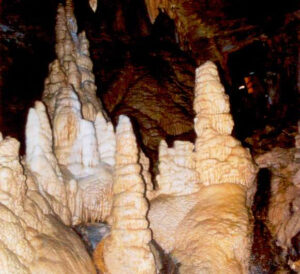thèse
Fanny Lhardy
1474162
Role of Southern Ocean sea ice on deep ocean circulation and carbon cycle at the Last Glacial Maximum
Résumé
Compared to the present-day climate, the cold period of the Last Glacial Maximum was characterized by an expanded sea-ice cover in the Southern Ocean, a shoaled Atlantic deep ocean circulation and a lower atmospheric CO2 concentration. These changes are well-documented by indirect observations but difficult to represent in simulations of climate models.
Indeed, these models tend to simulate a too high atmospheric CO2 concentration, a too deep Atlantic deep ocean circulation, and a sea-ice cover with a too circular distribution in the Southern Ocean and a too small winter extent and seasonal amplitude. The model-data discrepancies observed at the Last Glacial Maximum call into question the model representation of some important climate processes.
Several studies have underlined the crucial role of the Southern Ocean sea ice on ocean carbon storage capacity and deep circulation. I have therefore focussed on this region to improve our understanding of the processes associated with this storage. Thanks to simulations performed with the Earth System Model iLOVECLIM, I have demonstrated that the uncertainties related to ice sheet reconstructions have a limited impact on the variables examined in this study.
In contrast, other choices of boundary conditions (influencing the ocean volume and alkalinity adjustment) can yield large changes of carbon sequestration in the ocean. I also show that a simple parameterization of the sinking of brines consequent to sea-ice formation significantly improves the simulated Southern Ocean sea ice, deep ocean circulation and atmospheric CO2 concentration.
A set of simulations including the effects of diverse ocean parameterizations is used to show that the too deep ocean circulation simulated by our model cannot be attributed to an insufficient sea-ice cover, whereas convection processes in the Southern Ocean seem crucial to improve both the Southern Ocean sea ice, the deep ocean circulation and the atmospheric CO2 concentration at the Last Glacial Maximum.
Informations pratiques
La soutenance de thèse aura lieu en présentiel au LSCE (salle 118, accès restreint), en ligne par visioconférence. Lien public pour obtenir l’accès à la salle virtuelle de soutenance : https://cnrs.zoom.us/j/98214083691
ID de réunion : 982 1408 3691
Code secret : 7RRRjc
Composition du jury
Agatha de Boer, Associate Professor, Stockholm University, Rapportrice
Samuel Jaccard, Professeur, University of Bern, Rapporteur
Tatiana Ilyina, Associate Professor, MPI Hamburg, Examinatrice
Martin Vancoppenolle, Chargé de Recherche CNRS, LOCEAN, Examinateur
Kazuyo Tachikawa, Directrice de Recherche CNRS, CEREGE, Examinatrice
Matthieu Roy-Barman, Professeur des universités, UVSQ, Examinateur
Didier Roche, Directeur de Recherche CNRS, LSCE, Directeur de thèse
Nathaëlle Bouttes, Chargée de Recherche CNRS, LSCE, Co-encadrante





